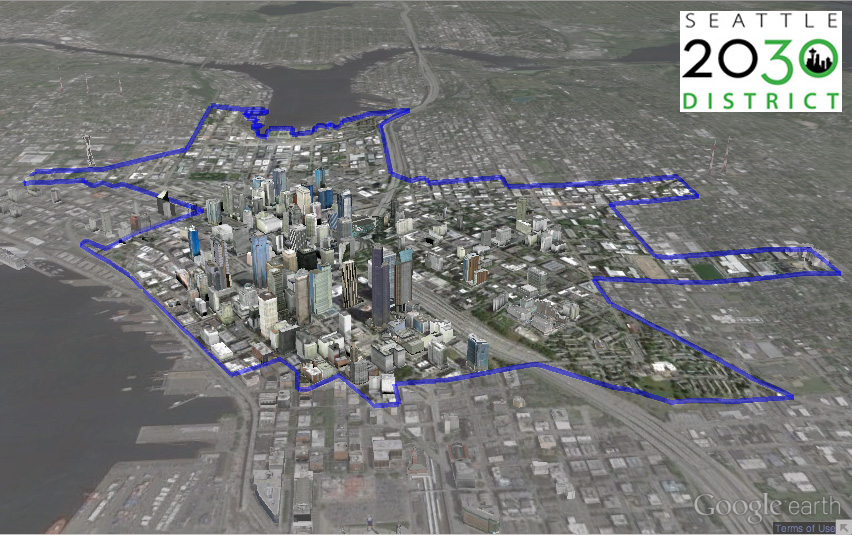
By Vanessa Packer
IF YOU’VE EXPERIENCED HURRICANE SANDY or turned on the news lately and witnessed the latest tsunami, typhoon or other natural disaster, the idea of climate change is probably already engrained into your thinking. Maybe you’ve been warned of the dangers of eating too much fish for fear of mercury poisoning or read that pollution is caused by meat production. The new year gives us the opportunity to begin again and start fresh, and with simple changes we can all be a little more sustainable. To guide us in understanding the scope of our changing world, bonberi spoke with The Seattle 2030 District Executive Director and sustainability expert Brian Geller who offered his tips on how to make important changes in our daily life and home.
Your background is in Architecture. Why did you focus on sustainability?
I first learned about sustainability when I started architecture school at Parsons School of Design. My professor did not even call it sustainability, she called it “Systemic Thinking” – the notion that everything in our world is interconnected. That concept grabbed hold of my mind and made me look at the world and the environment differently. People’s environment consists primarily of buildings, or what we call “the built environment”. The average person spends about 90% of their time indoors, so the air, light, and overall indoor environmental quality of buildings makes a significant impact on people’s lives. Add this to the fact that approximately 50% of all energy generated and consumed in the US goes to powering buildings, and I was sold: Improving building became my path to environmental activism.
What is The Seattle 2030 District?
The Seattle 2030 District is a non-profit in the City of Seattle, dedicated to reducing the energy use, water use, and transportation emissions of Downtown Seattle by 50% by the year 2030. Basically it’s America’s first High-Performance Building District. We are taking something called the 2030 Challenge for Planning and applying it over an entire downtown area. Over 40 million square feet of buildings are participating in the group. Others have taken notice of our success, and there are currently five 2030 Districts in other American cities, with more on the way in 2014.
How does the mission of your organization connect to human health and affect the food we eat?
When my wife and I were expecting our first child, we installed three different fish mercury apps on our phones to carefully plan our seafood consumption. It’s a maddening situation for health-conscious pregnant women – doctors espouse health benefits of fish consumption, but caution against eating too much because of mercury poisoning. Most people picture mercury in oceans coming from manufacturing or some specific industrial process, but the largest source of mercury in oceans is actually emissions from coal-fired power plants. Once Mercury gets into the ocean we have no easy way of getting it out. We have no larger body of water to turn to for seafood, so reducing energy consumption in buildings actually has an impact on the health of our oceans and the quality of the food it provides us. The 2030 challenge was originally devised to combat climate change, but the way we currently build and operate buildings – and all other facets of our economy – contributes to climate change, mercury in oceans, toxins in groundwater, and many other environmental problems. Remember the definition of systemic thinking? Nature has its own very elegant, interconnected systems that we are currently working against, and the resulting damage ultimately reduces the environment’s ability to care and feed us.
Buying local, organic food is about more than personal health or making a statement – doing so en masse actually changes the way agriculture does business. Big agriculture is very powerful and resistant to change. Many states are considering a new crop of “Ag-Gag” laws, designed to punish whistleblowers for the very act of filming and showing abuses in the agriculture industry. People need to understand and be outraged by these developments, but one of the most effective ways to fight big agriculture is with your wallet – every piece of food bought at a farmers market, from the organic food aisle, or grown at home means less money going into the big agriculture machine, and less environmental harm done as a result.
Why do so many people miss this connection?
The issues I mentioned are invisible. People can’t see where their power comes from or what impacts power generation creates, and more than most people don’t see how their food is grown. When asked where food comes from, most children (and many adults) simply answer “the grocery store”. Raising people’s awareness around these issues within their busy lives is a challenge, but several great videos like “The Story of Stuff” exist.
What are some common misconceptions about being green in the home?
The biggest misconception is that being green at home is a sacrifice, spending more money to somehow reduce your comfort and happiness. Nothing could be further from the truth. Today’s products make homes healthier, more efficient, and more comfortable places to live.
What are some changes people can make in their everyday lives to live a healthier life, and also contribute to the big picture?
Fortunately, many “green” changes that people make in their lives also help the environment. Here is a short list of big ones:
- Eat less meat. Most Americans eat far more meat, especially red meat, than is healthy. From an environmental perspective, you can save more water by not eating a pound of red meat than you can by not showering – for six months! Meat production uses an extraordinary amount of resources water, land, feedstock for animals, and creates an enormous amount of pollution.
- Take the Train. You burn more calories walking, and are exponentially safer on public transportation than driving around in your car. Driving impacts the environment in many negative ways – emissions from burning fuel, untreated storm water runoff from roads and driveways, and of course all of the upstream impacts of oil drilling, refining, and transportation.
- Live in a healthy, energy-efficient home. Toxins in the home and wasted energy are as bad for you and your wallet as they are for environment. Make sure you use some the products below next time you do some home improvements
Must-haves for improving your home:
- LED Lights: They use about 1/10th mimic the color spectrum of natural daylight. They also last over 20 years
- Zero VOC paints: VOCs, or Volatile Organic Compounds, are the smell normally associated with traditional paint. These odors are toxic for you and the environment. The quality and price of zero VOC paint is on par with the traditional stuff
- PVC-free Shower Curtains: That smell normally associated with a new shower curtain comes from polyvinyl chloride, a material that is not even legal within the European Union. Many alternatives exist that won’t pollute the environment or your home
- Organic Mattresses and flame-retardant-free clothing: This goes double for children’s rooms. Mattresses and children’s pajamas are traditionally laced with carcinogenic flame retardants. Buy organic mattresses and cotton clothing the power of traditional incandescents and can
- Buy Local and Organic Food – doing so en masse actually changes the way agriculture does business.


52 Comments